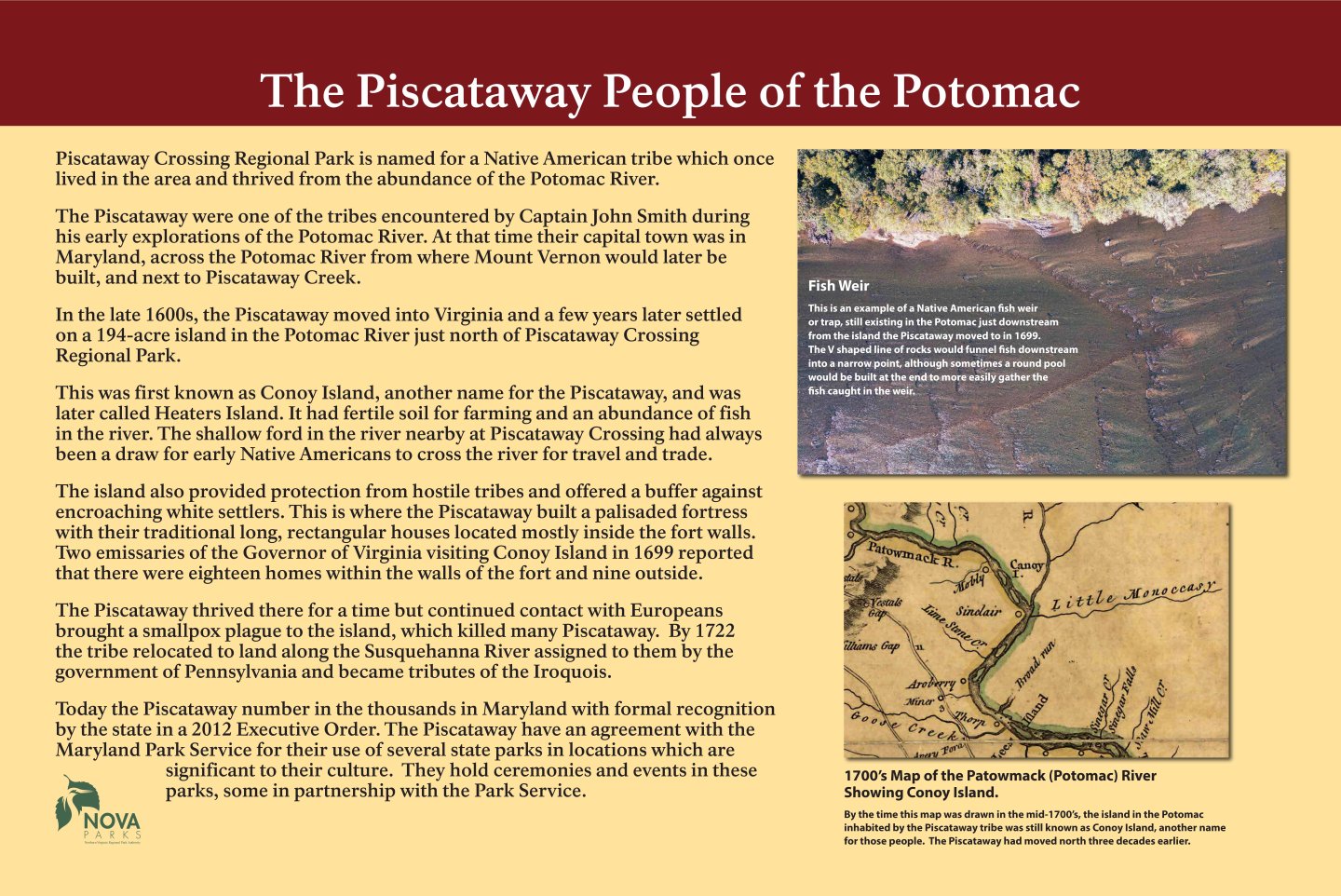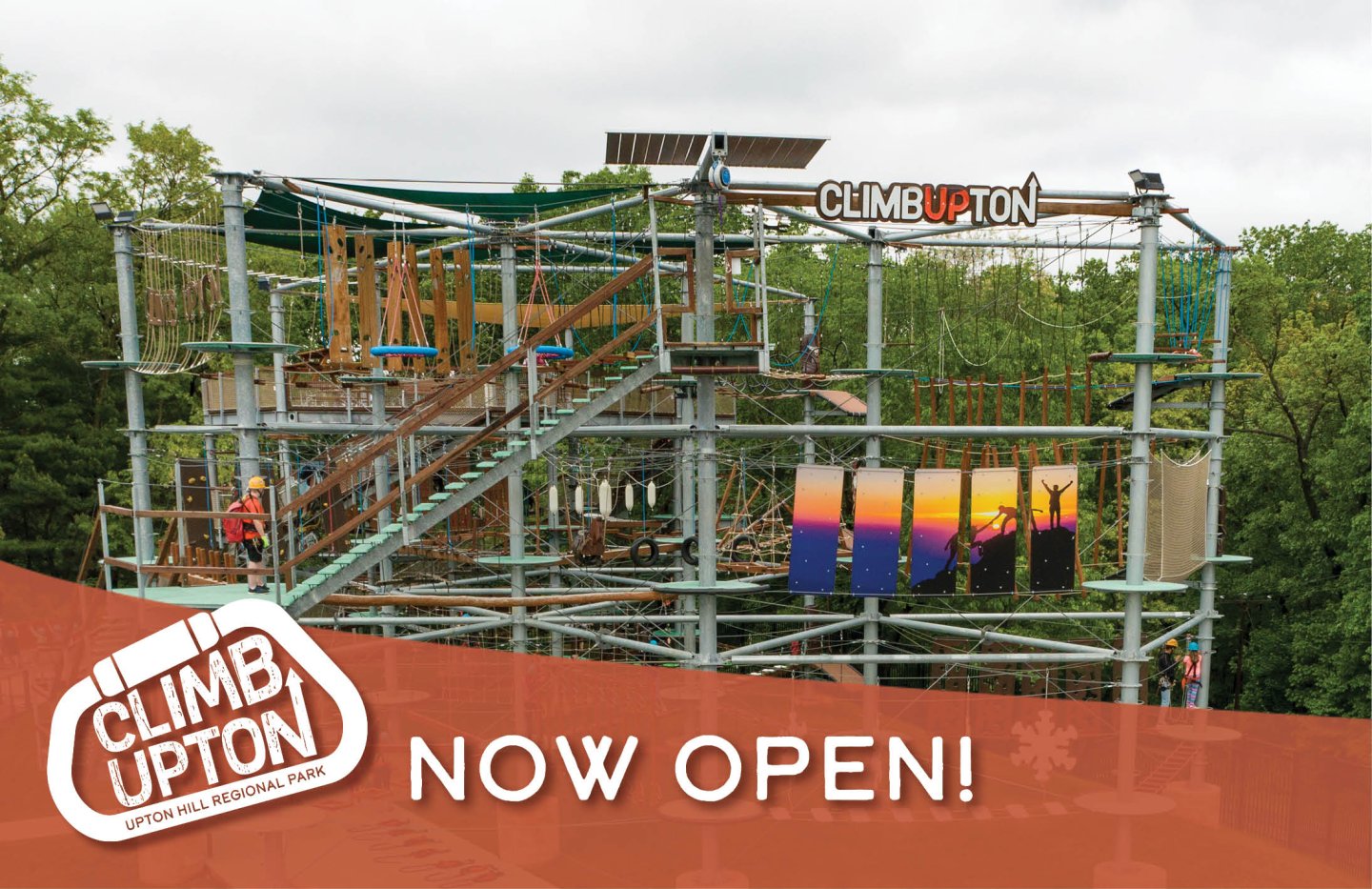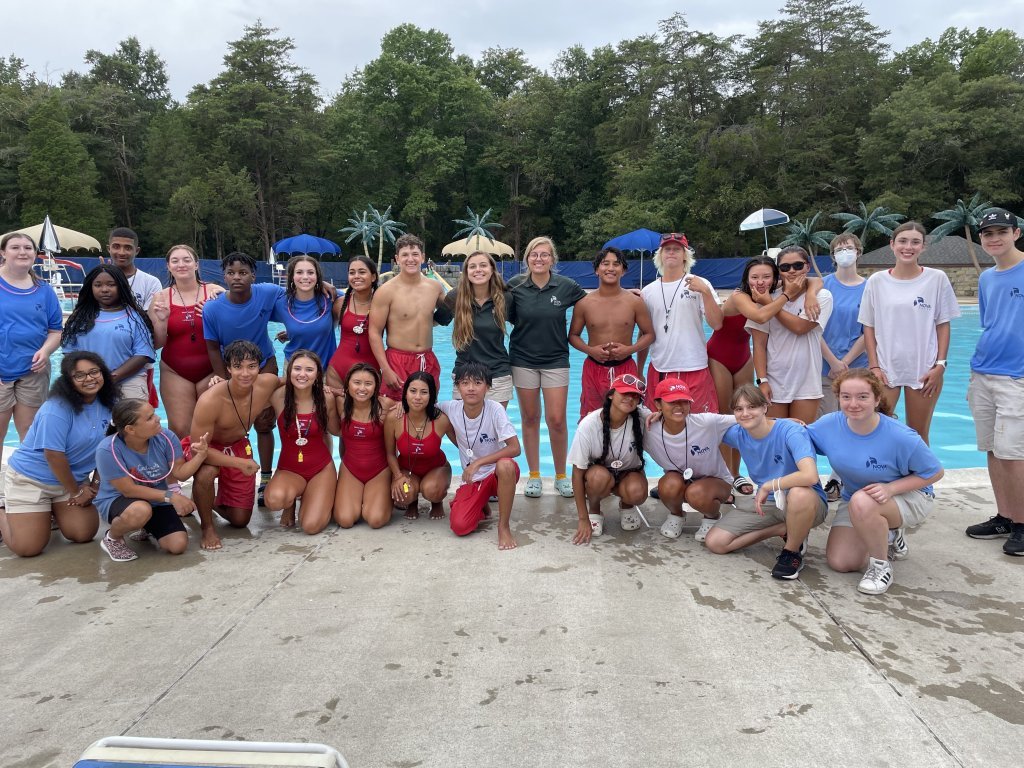Piscataway Crossing Regional Park
Park History Interpretive Series: The Piscataway People of the Potomac

Piscataway Crossing Regional Park is named for a Native American tribe which once lived in the area and thrived from the abundance of the Potomac River.
The Piscataway were one of the tribes encountered by Captain John Smith during his early explorations of the Potomac River. At that time their capital town was in Maryland, across the Potomac River from where Mount Vernon would later be built, and next to Piscataway Creek.
In the late 1600s, the Piscataway moved into Virginia and a few years later settled on a 194-acre island in the Potomac River just north of Piscataway Crossing Regional Park.
This was first known as Conoy Island, another name for the Piscataway, and was later called Heaters Island. It had fertile soil for farming and an abundance of fish in the river. The shallow ford in the river nearby at Piscataway Crossing had always been a draw for early Native Americans to cross the river for travel and trade.
The island also provided protection from hostile tribes and offered a buffer against encroaching white settlers. This is where the Piscataway built a palisaded fortress with their traditional long, rectangular houses located mostly inside the fort walls. Two emissaries of the Governor of Virginia visiting Conoy Island in 1699 reported that there were eighteen homes within the walls of the fort and nine outside.
The Piscataway thrived there for a time but continued contact with Europeans brought a smallpox plague to the island, which killed many Piscataway. By 1722 the tribe relocated to land along the Susquehanna River assigned to them by the government of Pennsylvania and became tributes of the Iroquois.
Today the Piscataway number in the thousands in Maryland with formal recognition by the state in a 2012 Executive Order. The Piscataway have an agreement with the Maryland Park Service for their use of several state parks in locations which are significant to their culture. They hold ceremonies and events in these parks, some in partnership with the Park Service.


